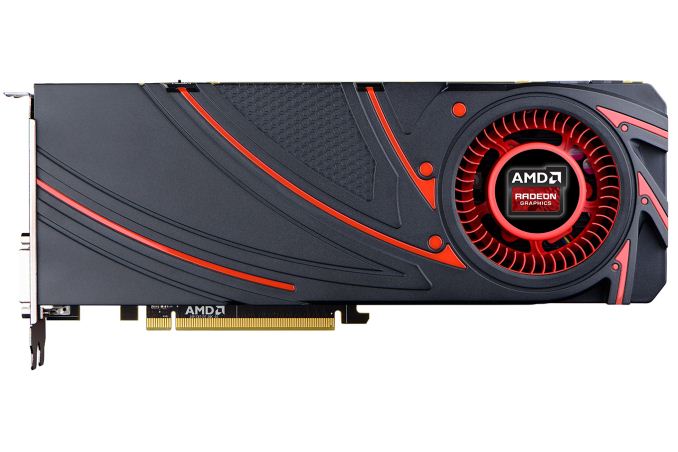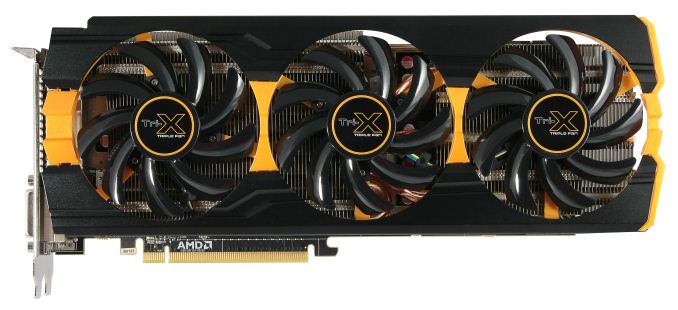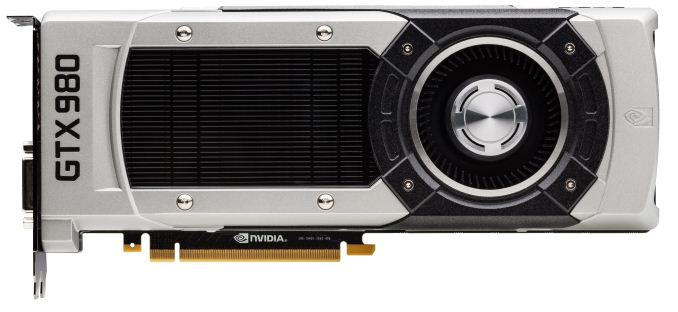AMD Radeon R9 290 Series Prices Finally Begin To Fall
by Ryan Smith on October 7, 2014 12:00 PM EST
With the launch of NVIDIA’s Maxwell-powered GeForce GTX 900 series last month, it was immediately obvious that NVIDIA had been able to deal a swift blow to AMD’s product lineup by surpassing AMD’s performance while significantly undercutting their pricing. At the time we were expecting AMD to quickly respond with the necessary price cuts to keep the R9 290 series competitive with the GTX 900 series, but surprisingly even a week later this had yet to happen.
Now a bit over two and a half weeks after the GTX 900 series launch, we’re finally seeing Radeon R9 290 series pricing fall in response to NVIDIA’s launch. AMD has not announced an official price cut at this time – and admittedly neither AMD nor NVIDIA tend to announce reactive price cuts – so it’s not clear whether this is AMD’s doing, board partner’s, retailers, or most likely all three. But regardless, retail video card prices at Newegg and other etailers have seen some substantial drops that help bring back at least some balance between AMD and NVIDIA’s high end video card lineups.
A number of Radeon R9 290 cards can now be found for around $300 after rebate, with a couple more factory overclocked models at $310. With HIS, Sapphire, PowerColor, Asus, and XFX represented, this is a broad selection of vendors with a bit less than half of Newegg’s stock now at or around $300. Meanwhile R9 290X can be found for $399, again with a wide selection of vendors and roughly half of Newegg’s stock at or near that price. The remainder of Newegg’s stock in turn generally consists of heavily overclocked or otherwise premium cards that carried their own price premium before these latest cuts.
Speaking of AMD card prices, it should also be noted that AMD’s Never Settle Forever bundle is still active even after this round of price cuts. AMD and their partners will be continuing to try to influence the value proposition of their products by including free games.
For AMD these price cuts don’t come a moment too soon, and while they are going to help the competitive landscape I’m not convinced this is the last time we’re going to see AMD cut prices. As we discussed in our review of the GTX 970, comparing stock-to-stock, the $329 GTX 970 is every bit as fast as the now $400 R9 290X. If AMD wants to be price/performance competitive with NVIDIA then there’s still an additional $70 price difference between the two cards, a gap further muddied by AMD’s game bundle and NVIDIA’s superior energy efficiency. Strictly speaking $400 may not be low enough for the R9 290X, but no doubt AMD wants to see what sales are like at $400 before cutting prices on their single-GPU flagship any further.
The R9 290 on the other hand is in an interesting spot. At resolutions below 2160p it trails the GTX 970 by around 10%, but then again at $300 it’s also priced about 10% lower. Since it ships at a lower clockspeed than R9 290X a lot of AMD’s partners also goose the core clock on R9 290, which improves performance a bit but isn’t enough to close that 10% gap. What it does mean however is that at least so long as energy efficiency is not a concern, R9 290 is appropriately priced for its performance. However if energy efficiency is a concern, then AMD doesn’t have any kind of counter to GM204 at this time.
If anything the one wildcard at this point is the availability of the new GeForce cards. Despite stock more-or-less holding up immediately post launch, we’ve seen both the GTX 980 and GTX 970 go out of stock in the last week. As of the time of this writing it looks like Newegg has received their Tuesday shipment, so there is stock available, but it’s a thin selection of just a few different cards (including a model or two at MSRP). For prospective buyers this means either playing inventory games or grabbing the AMD alternative, and for AMD this is all the more reason not to cut prices too drastically while GeForce availability is still limited. As for NVIDIA it’s been a while since we’ve seen them capacity constrained on the high end, so while it’s solid evidence that they’ve done everything right with the GTX 900 series launch, it does mean that they’re also going to be leaving sales on the table until supply and demand level out.
| Fall 2014 GPU Pricing Comparison | |||||
| AMD | Price | NVIDIA | |||
| Radeon R9 295X2 | $1000 | ||||
| $550 | GeForce GTX 980 | ||||
| Radeon R9 290X | $400 | ||||
| $330 | GeForce GTX 970 | ||||
| Radeon R9 290 | $300 | ||||
| Radeon R9 280X Radeon R9 285 |
$250 | ||||
| Radeon R9 280 | $200 | GeForce GTX 760 | |||
Source: The Tech Report












69 Comments
View All Comments
tuxfool - Wednesday, October 8, 2014 - link
It is almost guaranteed that AMD will beat Nvidia to be first to use HBM by virtue of the fact that they're co-developing it with Hynix.More bandwidth would benefit Nvidia especially at the higher end. Despite their new colour compression techniques the 256bit bit is bottlenecking at higher resolutions vs. the Hawaii 512bit bus. It is impressively competitive but still limiting.
dragonsqrrl - Tuesday, October 7, 2014 - link
Sorry, posted before I was finished.Also the power consumption results that a lot of people seem to quote when criticizing the 980's advertised TDP comes from total system power draw. Ryan reminded readers in his article that this also includes the potential for higher power draw from the processor and other system components to feed the higher performance GPU. In benchmarks that either isolate the power draw of the graphics card, or nullify the power impact of the processor, the spread widens, which is further evidence in support of Ryan's analysis. I believe the spread between the 780Ti and 980 was ~80W, which brings the avg TDP of the 980 to 170W assuming 250W for the 780Ti.
TiGr1982 - Tuesday, October 7, 2014 - link
OK, then the perf/watt leap is 250/170 *1.13 = 1.66.Actually, one can look at these things another way around: if Maxwell (say, GM204) is probably close to the most optimal GPU which is ever possible to build on 28 nm, then this means that Kepler was in a sense a waste of silicon and power: greatly oversimplifying, 192 ALUs "monolithic" SMX was not an optimal choice. Now the choice of 4x32 = 128 ALUs in SMM is presumably pretty much optimal from the point of view of computer science, I would assume. Then, it took two years of R&D to get to the optimal ALUs configuration from sub-optimal (plus, the rest of the stuff like memory bandwidth-saving texture compression etc). Very impressive, but not a breakthrough to me - just an optimization of initially suboptimal design. That's it.
Then, the same logic tells that AMD's GCN, being roughly on par with Kepler, is also seriously sub-optimal in comparison with Maxwell. So, nVidia "did their R&D homework" on 28 nm in the last two years, and if AMD didn't, then that's grades A (nV) vs B- (AMD). That's what Maxwell appearance means. That's the story IMHO.
dragonsqrrl - Tuesday, October 7, 2014 - link
Totally agree, almost.chizow - Tuesday, October 7, 2014 - link
@TiGrProblem with your comparison is Nvidia is not deriving their comparisons against GK110 (Huang said so in his keynote, and all the slidedecks confirm this), they are comparing against GK104, which is what they consider true predecessor part to GM204. Their calculations are probably more along the lines of:
210/180*1.7 and you can see, the ~2x perf/watt they claim is retained.
But, throw all that out the window and just look at it from an empirical standpoint, since you say you are from natural sciences.
Say you have one specimen and it is fast, but its successor, all else being equal, is 1.5-1.7x faster but shares all other physical characteristics and habitat. You wouldn't consider that impressive? You want to compare to GK110, you don't think a 250W GM210 on the same 28nm process node that delivers even 1.5x perf of GTX 780Ti wouldn't be hugely impressive?
TiGr1982 - Tuesday, October 7, 2014 - link
We already settled on an estimated 1.5-1.7 leap above together with dragonsqrrl. Yes, it's impressive, but as I said above, it's just a well done optimization, meaning that their previous design aka Kepler was sub-optimal (same with current AMD GCN, now lagging behind Maxwell considerably). There is no "magic" in there - just new and much better design.In a sense, figuratively speaking, it feels a little bit like going from P4 to Core 2 Duo on the same (65 nm then) process - much better architecture design does the job (of course, it's not a good comparison, CPUs to GPU, "apples to oranges", but this comes to mind from history). As you like to say, new ASIC has much better architectural design, than the old one.
eek2121 - Wednesday, October 8, 2014 - link
Please do be careful there...I like AMD as much as most of these AMD morons around here...but they never recovered from THAT jump...chizow - Wednesday, October 8, 2014 - link
@TiGr, again more nonsense, if anything Kepler actually performed better than expected. Look at GK110 (780Ti) compared to GF100 (480), full generation to full generation + process node. It is ~2.6x faster, which is absolutely unprecedented. Typically, you expect 1.6-1.8x max, with ~2.0x being amazing. And, they used less power in the process. That is an amazing leap in performance. It's no wonder Nvidia was able to jump their SKUs up an entire product range and command $700+ on the high-end.It's really just 2 home runs in a row for Nvidia and we haven't even seen Big Maxwell yet, while AMD is going the opposite direction. They are still competitive in terms of performance, but their efficiency is tanking in the process.
And as I already broke out, your calculations for perf/watt are wrong, Nvidia is comparing GM204 with GK104, so once you make that comparison, their 2x perf/watt comparison is accurate. They even use this in their bar graphs and slide decks, so while it is nice you came to the conclusion it is "only 1.5-1.7 leap", it's just not accurate. :)
http://international.download.nvidia.com/geforce-c...
TiGr1982 - Wednesday, October 8, 2014 - link
@chisow, I leave you believing in whatever you like. Bye.chizow - Wednesday, October 8, 2014 - link
@TiGr: likewise, I'm sure you believe whatever you like.